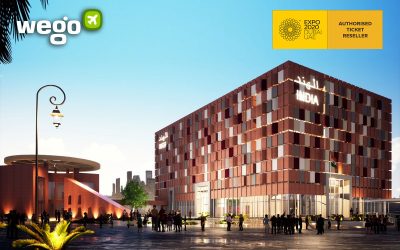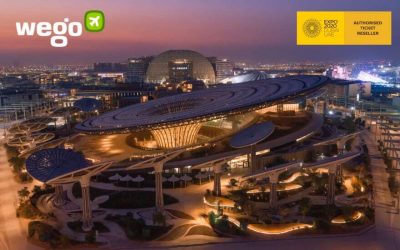This article is reviewed regularly (on a monthly basis) by Wego’s editorial team to ensure that the content is up to date & accurate.
Updated 13 October 2021
The Dubai Expo 2020 has opened up since 1 October 2021. Among the many architectural innovations is the Singapore pavilion inaugurated by Singapore’s Urban Redevelopment Authority from WOHA. The Pavilion is one of the greenest eye-catching structures at the Dubai Expo 2020 and will be up and running for the next six months.
Here’s everything you need to know about this green pavilion. 
Table of Contents
Get your Expo 2020 ticket at Wego
We are proud to announce that Wego is Expo 2020 Authorized Ticket Reseller, meaning you can now purchase your tickets easily from us!
Join us at the world-class event showcasing cultural experiences, cutting edge innovations, and mind-blowing ideas featuring more than 190 countries. Get your Expo 2020 tickets at Wego now!
The Singapore pavilion
Designed by Singapore-based architectural practice WOHA, the pavilion is a three-dimensional garden filled with lush green plants. It aims to bring out Singapore’s efforts to be a green city in a natural habitat.
Video courtesy of Duha Haj Yahya
Through this pavilion, WOHA illustrates how buildings can be designed more responsibly by considering environmental and climatic factors. Fundamentally, the layout is designed to welcome visitors to a sustainable oasis in the desert where invention, architecture and nature have been merged into one.
Singapore’s nature, nurture, future theme
The comprehensive theme of “Nature. Nurture. Future” is portrayed by the dense foliage that permeates the entire 1,550 sq m pavilion through the hanging gardens.
The pavilion was built around three plant-covered cones: Rainforest, City, and Flower Cones. Each cone showcases Singapore’s metamorphic suburban journey, its solutions to the critical urban issues and how they have overcome them over time to create a sustainable future. The cones are engulfed in more than 170 varieties of tropical plants in the Sustainability district of the Expo 2020.
Visitors journey through lush terrains

Image © Straits Times
The pavilion provides an inviting space for visitors from all over as a nature-ridden aesthetic unfurls itself through its different settings. Upon entering the Ground Garden, visitors are welcomed by a landscape and a phytoremediation pond among a vivid array of plants.
The Singapore pavilion promises a host of spectacular sights, including a flower dome, where Singapore’s national flower, the ‘Vanda Miss Joaquim orchid’ and the ‘Dendrobium Sheikha Fatima bint Mubarak’ orchid is expected to be on display in full bloom during the event.
Visitors to the pavilion can take a route through the building on a series of passages that pass through hanging gardens and its surroundings and into the cones. At the top of the building is an open space containing a cafe and an open auditorium for talks.
Landscaping and architecture in nature
The pavilion is powered by solar panels that shelter the pavilion from radiation above the sunroof, thus making the Singapore pavilion self-sustaining. To add to the three-dimensional biophilic experience, the net-zero energy-consuming pavilion exhibits the Hanging Garden and three thematic cones in a vertical layout. Then comes the Open Sky Market on the upper deck, which has photovoltaic panels on the glass roof which harness the sun’s rays to generate electricity.
The energy reduction strategies such as natural cross-ventilation, shading and planting create a pleasant climate for both, visitors and plants. A solar water desalination system meets all of the pavilion’s hydration needs with the help of mist fans that atomize water that cool off the enclosed spaces, thus lowering the temperature between a perceived 6 deg C and 10 deg C.
The smart green pavilion
The Pavilion has situated three dome-shaped robots that are meant to water the plants in the vertical garden. The robots weighing 40kgs each have sensors to monitor the plants and identify their health status on a day to day basis. The robots are also capable of estimating the temperature, humidity, carbon dioxide and oxygen levels in the Pavilion.
These climbing robots were designed by the robotics start-up Oceania Robotics and are among the first of its kind deployed for the purpose of landscape maintenance on curved vertical green walls. These prototype robots will present relevant solutions to rapid urbanization and the need to encourage more greenery in big towns and cities.
Making a positive impact
The Singapore Pavilion investigates how to build secure, self-sufficient, attractive, yet practical structures that synchronize with nature. These are flexible solutions, and its design strategies can be adapted to different climates and geographies. It also mirrors Singapore’s story of thriving in a challenging environment.












